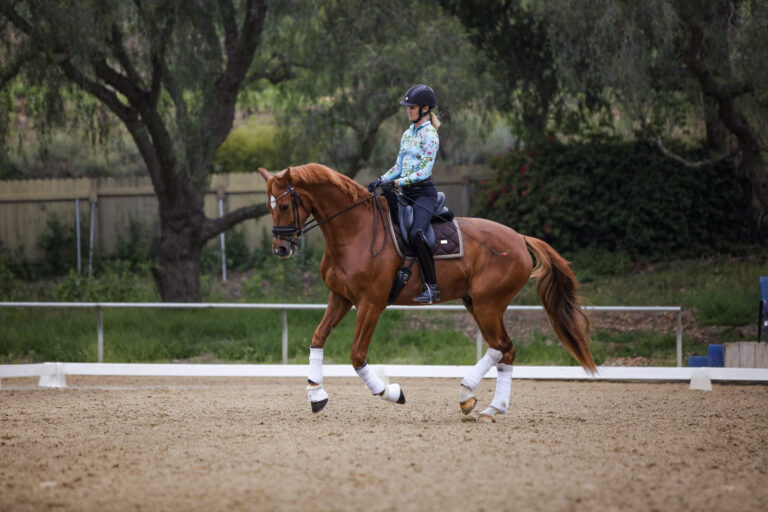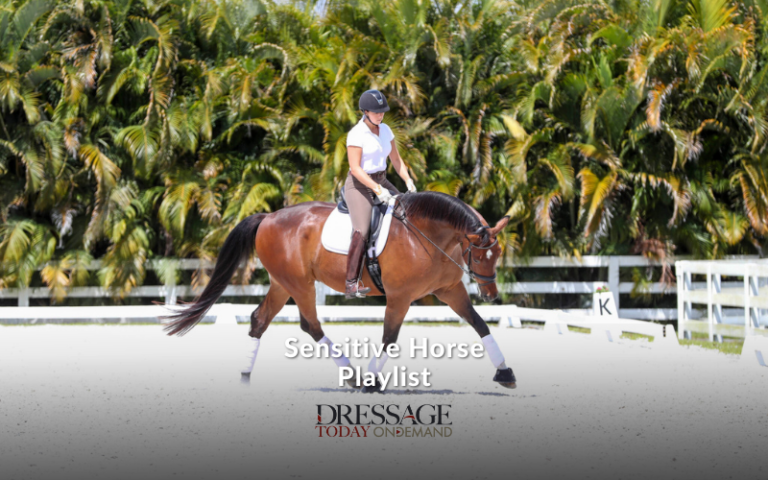After I essentially retired Forrest by turning him out, I did allow myself a bit of a pity party for a couple of days. There is, however, some consolation in knowing others have gone through or are going through the same thing: losing a talented horse to lameness or something far worse. I’m lucky, I still have Forrest. I see him all day in the field we refer to as “the assisted living ward,” with the other two retirees, having the time of his life. And actually, he is looking pretty darned good out there. Even his feet, now barefoot, are looking the best they’ve ever looked with, gasp, actual heel growth!! However, just because a horse appears sound at liberty is no guarantee that once a rider climbs up they’ll remain sound.

So what to do? Grass has started growing in my arena and my body is jonesing to be in the saddle. However, the unpleasant fact is that since I had thyroid surgery in March, I’ve been unable to work owing to the diagnosed side effects of vocal cord damage and two granulomas in my throat. Two surgeries were immediately recommended, which I’ve declined, opting for complete vocal rest instead. Not a peep for weeks. Paul, of course, is delighted, but this means I can’t teach, I can’t do public speaking and I can’t perform stand-up, either, which I count on. Obviously, this means the idea of buying a new horse is as likely as NBC giving dressage prime time coverage during the Olympics.
What I decided to do was to let people know I wanted to ride. If I couldn’t physically speak, I could at least blab about my plight on Facebook and at least keep the modest training side of my business. So many people, both friends and strangers, have followed my journey with Forrest and there was a genuine outpouring of sympathy, as well as empathy, which was much appreciated. And in the middle of it, one of my friends who also rode in one of my dressage boot camps, Sharon Clark, graciously offered me the ride on her teenaged Oldenburg, Traum, whom I remembered pretty well. Sharon has been working very hard to regain her own strength and stamina after a nearly fatal illness two years ago, and as Traum is a big, horse and Sharon quite petite, she felt as though she couldn’t ride him effectively at this point, or more than a couple of times a week, so would I like to ride him for as long as I liked? Yes, I would!

Traum has an interesting background: previously bred and correctly started by a respected ‘S’ dressage judge, he also had a couple of world renowned riders on his back as a 5 year old. Shown through Second Level, this affable son of Tantris later became an eventer, then for several years, a hunter, then a lesson horse before ending up in Sharon’s barn. Now 17, with his Thoroughbred blood evident in his camel wither, I was delighted that Forrest’s custom-made Stubben fit him well. And as you can see, Traum’s neck is set on a little low and he could use some help in the topline department. During our first ride my thoughts were that like most horses, he was hollow left, but also felt a bit locked in the jaw, poll and back, and as he doesn’t have the most active hocks, just trying to get a half halt to go through was a challenge. However, what he does have is a lovely brain and work ethic; a testament to Sharon who has both cherished and taken excellent care of him. My plan was to spend the first couple of weeks riding a glorified warm-up with lots of suppling at walk and trot to loosen that back. Listen, when you’re a woman and you feel the need to wear a cup when you ride, that’s one, stiff back! I really wanted to accomplish a true stretch with him following my hand without plopping on his forehand, and also, it was bloody hot and humid, so I wasn’t going to work him more than 25 minutes in those conditions. I even did away with polo wraps in the days that followed to keep his legs cool and dry.

Now, I love a Cinderella project, but one has to be realistic. Traum gives every indication of being sound, however, if Mother Nature didn’t give him a fancy hind end, I can’t either. Plus, I don’t find it fair to demand a 17-year-old horse to suddenly start working in a way that he isn’t physically capable of going. My goal is to gain access to his back, so I can give his hocks a place to move beneath, and get him off his forehand. He’s quite long and the forehand is his second favorite place to visit after his feed tub. But getting him balanced is necessary to ensure future soundness and if I can get him back to working comfortably and correctly at Second Level, then that’ll be a nice gift for both Sharon and Traum, not to mention my lower back. By week three, I began to sit the trot in short bursts, rising as soon as I felt him stiffen, which was often, and on a 20-meter circle, rode several, crisp walk-trot-walk transitions, throwing in another the moment I felt him come against the hand. When I felt him lighten, we left the circle, trotted through the corner and did a few steps of shoulder-in each direction:

And when I felt he was using his hind end a bit more, I asked if he could maintain that down the long side for a few strides:

These good efforts were followed by a rewarding stretch. With voice rest I’m not even allowed to say, “Good boy,” but I can scratch his withers, and I’m pretty sure he knows he’s done a good job. Especially when he gets a fistful of peppermints at the end!












